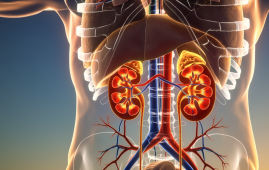

According to a recent study, the drug overdose fatality rate among those 65 and older doubled during a 20-year period, indicating the need for stronger policies addressing substance use disorders and mental health.
Nearly three-fourths of the unintended fatalities involved illegal narcotics like heroin, cocaine, methamphetamines, and synthetic opioids like fentanyl. The deaths resulted from both suicides and accidental overdoses. In 67% of deliberate overdoses, prescription opioids, antidepressants, benzodiazepines, antiepileptics, and sedatives were used.
“The dramatic rise in overdose fatalities among adults over 65 years of age in the past two decades underscores how important it is for clinicians and policymakers to think of overdose as a problem across the lifespan,” said co-author Chelsea Shover, assistant professor of medicine in the division of general internal medicine and health services research at the David Geffen School of Medicine at UCLA.
“Updating Medicare to cover evidence-based treatment for substance use disorders is crucial, as is providing harm reduction supplies such as naloxone to older adults.”
The paper is published in JAMA Psychiatry.
The researchers calculated annual overdose deaths among seniors from 2002 to 2021 using the U.S. Centers for Disease Control and Prevention Wide-ranging Online Data for Epidemiologic Research (WONDER) database, comparing demographics, specific drugs, and whether the deaths were intentional, unintentional, or undetermined.
Overall, they discovered that the number of fatal overdoses increased fourfold, rising from 1060 in 2002 (3 per 100,000 people) to 6,702 (12 per 100,000) in 2021. Blacks experienced the highest rates, which were 30.9 per 100,000.
Among the other findings:
- By 2021, 1 in 370 senior deaths stemmed from overdoses, with 3814 of those (57%) involving opioids, 2587 (39%) from stimulants, and 1204 (18%) a combination of both
- About 13% (882) of overdoses in 2021 were intentional, 83% (5,541) were unintentional, 4% (274) were undetermined, and 5 (0.07%) were homicide
- Females accounted for 505 489 of 882 (57%) intentional overdoses and 1594 of 5541 (29%) accidental overdoses
- Intentionality differed by race and ethnicity: 31 of 83, or 37%, of overdoses among Asians, were intentional, compared to, 805 of 4848 (17%) among whites, and 15 of 1665 (1%) among Blacks
- Alcohol poisoning deaths rose from 10 (less than 0.03per 100,000) to 281 (0.5 per 100,000)
“Even though drug overdose remains an uncommon cause of death among older adults in the U.S., the quadrupling of fatal overdoses among older adults should be considered in evolving policies focused on the overdose epidemic,” the researchers write. “Current proposals to improved mental health and substance use disorder coverage within Medicare, for example, applying mental health parity rules within Medicare, acquire greater urgency in light of this study’s results.”
more recommended stories
 Circadian Control of Neutrophils in Myocardial Infarction
Circadian Control of Neutrophils in Myocardial InfarctionKey Takeaways for HCPs Neutrophil activity.
 E-Cigarette Use and Heart Attack Risk in Former Smokers
E-Cigarette Use and Heart Attack Risk in Former SmokersKey Takeaways for Clinicians and Nurses.
 36-Week Pre-eclampsia Screening May Reduce Term Risk
36-Week Pre-eclampsia Screening May Reduce Term RiskA New Preventive Strategy for Term.
 Cardiovascular Risk and Sudden Cardiac Death in Diabetes
Cardiovascular Risk and Sudden Cardiac Death in DiabetesRising Sudden Cardiac Death (SCD) Risk.
 Poor Kidney Function and Alzheimer’s Biomarkers Explained
Poor Kidney Function and Alzheimer’s Biomarkers ExplainedPoor kidney function may influence levels.
 Walking Speed Before Hip Replacement Predicts Recovery
Walking Speed Before Hip Replacement Predicts RecoveryNew Evidence Points to a Simple,.
 Neuroblastoma Drug Combo Extends Survival in Models
Neuroblastoma Drug Combo Extends Survival in ModelsA Promising Shift in High-Risk Neuroblastoma.
 How Soybean Oil Impacts Weight Gain and Metabolism
How Soybean Oil Impacts Weight Gain and MetabolismWhy Soybean Oil May Affect Metabolism.
 Coffee and Cognitive Function: Evidence Review
Coffee and Cognitive Function: Evidence ReviewA new narrative review in Cureus.
 Colorectal Cancer Screening Rates Low in Adults 45–49
Colorectal Cancer Screening Rates Low in Adults 45–49Recent UCLA research reveals that colorectal.

Leave a Comment